Edgar Wallace (1875–1932) was a British novelist and playwright and screenwriter whose works have been adapted for the screen on many occasions.
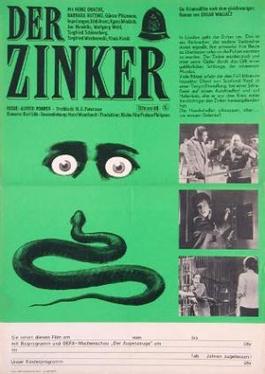
The Squeaker is a 1963 West German-French crime film directed by Alfred Vohrer and starring Heinz Drache. It was part of a very successful series of German films based on the writings of Edgar Wallace and adapted from the 1927 novel of the same name.
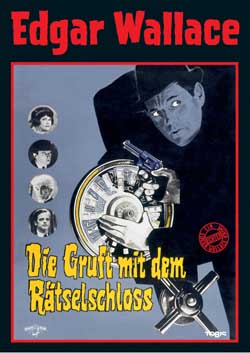
The Curse of the Hidden Vault is a 1964 black and white West German crime film directed by Franz Josef Gottlieb and starring Harald Leipnitz, Eddi Arent, Siegfried Schürenberg and Klaus Kinski. It is based on the 1908 novel Angel Esquire by Edgar Wallace, previously made into a British silent film..
Adorable Julia is a 1962 Austrian comedy film directed by Alfred Weidenmann and starring Lilli Palmer, Charles Boyer and Jean Sorel. It was entered into the 1962 Cannes Film Festival. It is based on the 1937 novel Theatre by W. Somerset Maugham, and the subsequent play that Guy Bolton and Marc-Gilbert Sauvajon adapted from the novel.

The Squeaker is a 1931 German crime film directed by Martin Frič and Karel Lamač and starring Lissy Arna, Karl Ludwig Diehl and Fritz Rasp. It is an adaptation of the 1927 Edgar Wallace novel The Squeaker. This adaptation introduced the mix of suspense and comedy that would come to define numerous German Wallace adaptations over the following decades. Lamač followed it up with another Wallace film The Ringer in 1932. The film's sets were designed by the art director Heinz Fenchel. It was shot at the Halensee Studios in Berlin and on location in Prague.
The Squeaker may refer to:
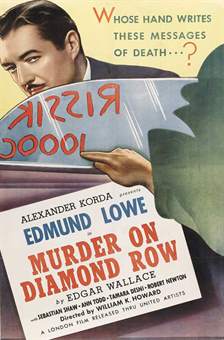
The Squeaker is a 1937 British crime film directed by William K. Howard and starring Edmund Lowe, Sebastian Shaw and Ann Todd. Edmund Lowe reprised his stage performance in the role of Inspector Barrabal. It is based on the 1927 novel The Squeaker and 1928 play of the same name by Edgar Wallace. Wallace's son Bryan Edgar Wallace worked on the film's screenplay. The Squeaker is underworld slang for an informer. The film is sometimes known by its U.S. alternative title Murder on Diamond Row.
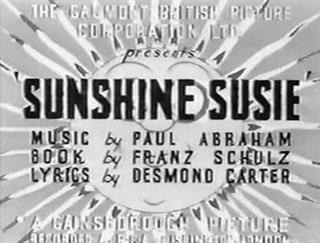
Sunshine Susie is a 1931 British musical comedy film directed by Victor Saville and starring Renate Müller, Jack Hulbert, and Owen Nares. The film was shot at Islington Studios with sets designed by Alex Vetchinsky. It was based on a novel by István Szomaházy. An alternate German-language version The Private Secretary was made, also starring Renate Müller.

Orphan of Lowood is a 1926 German silent drama film directed by Curtis Bernhardt and starring Evelyn Holt, Olaf Fønss and Dina Diercks. It is based on the 1847 British novel Jane Eyre by Charlotte Brontë, and is the last of at least eight silent film adaptations of the novel. It was shot at the Terra Studios in Marienfelde. Director Bernhardt, a Jew wanted by the Gestapo, escaped from Nazi Germany and immigrated to Hollywood where he directed films for MGM, RKO, Columbia Pictures and Warner Brothers.
The Man Who Bought London is a 1916 British silent crime film directed by Floyd Martin Thornton and starring E.J. Arundel, Evelyn Boucher and Roy Travers. It was based on the 1915 novel The Man Who Bought London by Edgar Wallace. It was the first of many Wallace stories to be adapted into films. It was made at Catford Studios.

The Green Manuela is a 1923 German silent drama film directed by Ewald André Dupont and starring Lucie Labass, Josef Winter and Grete Berger. The film is based on a novel by Clara Ratzka. A gypsy dancer becomes involved with some smugglers in Spain. The film's plot bears a number of similarities to Carmen. It was the first time Dupont worked with the cinematographer Werner Brandes and the art director Alfred Junge who were to become important collaborators with him. The poster of this movie is seen in Russian director Dziga Vertov's movie Man with a Movie Camera (1929) playing at a theater named the Proletarian. It's a symbol of Vertov's disdain of Western fanciful films.

The Marathon Runner is a 1933 German sports film directed by Ewald André Dupont and starring Brigitte Helm, Hans Brausewetter and Ursula Grabley. It was based on a 1928 novel by Werner Scheff, adapted by screenwriter Thea von Harbou. The film focuses on a love triangle between three German athletes competing at the 1932 Olympic Games in Los Angeles. It was shot at the Johannisthal Studios in Berlin with sets designed by the art directors Ernő Metzner and Erich Zander. The German premiere took place at the Ufa-Palast am Zoo. It was the last film Dupont made in Germany, before escaping into exile following the rise to power of the Nazis.
Otto Eis (1903–1952) was an Austrian-born writer who worked on a number of screenplays. He was born Otto Eisler to a Jewish family in Budapest which was then part of the Austro-Hungarian Empire. He later moved to Germany, where he was employed in the German film industry. Following the Nazi seizure of power in 1933, he moved to Austria, but had to flee again to France following the Anchluss. Eis later moved to the United States, but struggled to secure work in Hollywood although he wrote scripts for a handful of B pictures. Eis was the brother of Egon Eis with whom he co-wrote the screenplay for The Squeaker (1931).
Bryan Edgar Wallace (1904–1971) was a British writer. The son of the writer Edgar Wallace, Bryan was also a writer of crime and mystery novels which were very similar in style to those of his father. He was named after the American politician William Jennings Bryan who his father encountered during a trip to North America.
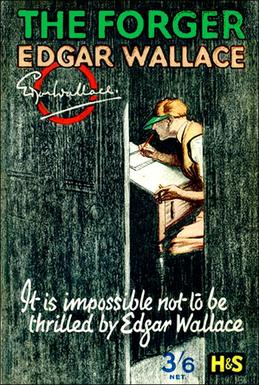
The Forger is a 1927 crime novel by the British writer Edgar Wallace.
The Squeaker is a 1930 British mystery crime film directed by Edgar Wallace and starring Percy Marmont, Anne Grey and Gordon Harker.
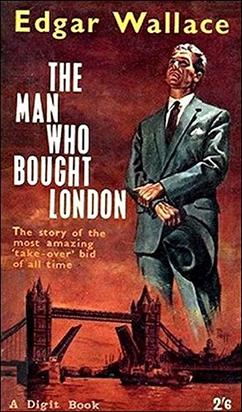
The Man Who Bought London is a 1915 crime novel by the British writer Edgar Wallace. It was originally published as a magazine serialisation.

The Monk with the Whip is a 1967 West German mystery thriller film directed by Alfred Vohrer and starring Joachim Fuchsberger, Uschi Glas and Grit Boettcher. It is inspired by the 1926 novel The Black Abbot and subsequent 1927 play The Terror by Edgar Wallace which also served as the basis for the 1965 film The Sinister Monk. It was made as part of a long-running series of film adaptations of his work produced by Rialto Film.
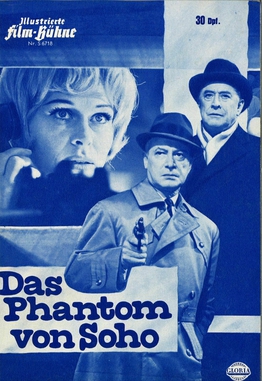
The Phantom of Soho is a 1964 West German thriller film directed by Franz Josef Gottlieb and starring Dieter Borsche, Barbara Rütting and Hans Söhnker. It was based on a novel by Bryan Edgar Wallace and was part in a large group of British-set thrillers made in Germany at the time, many of them adapted from the works of Wallace's father Edgar Wallace.
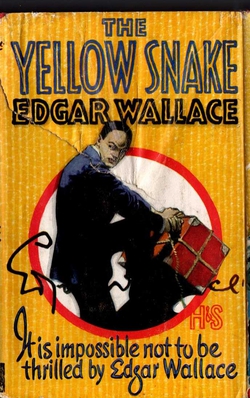
The Yellow Snake is a 1926 thriller novel by the British writer Edgar Wallace.













